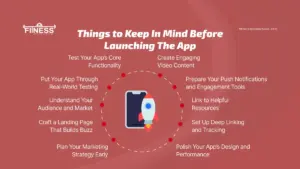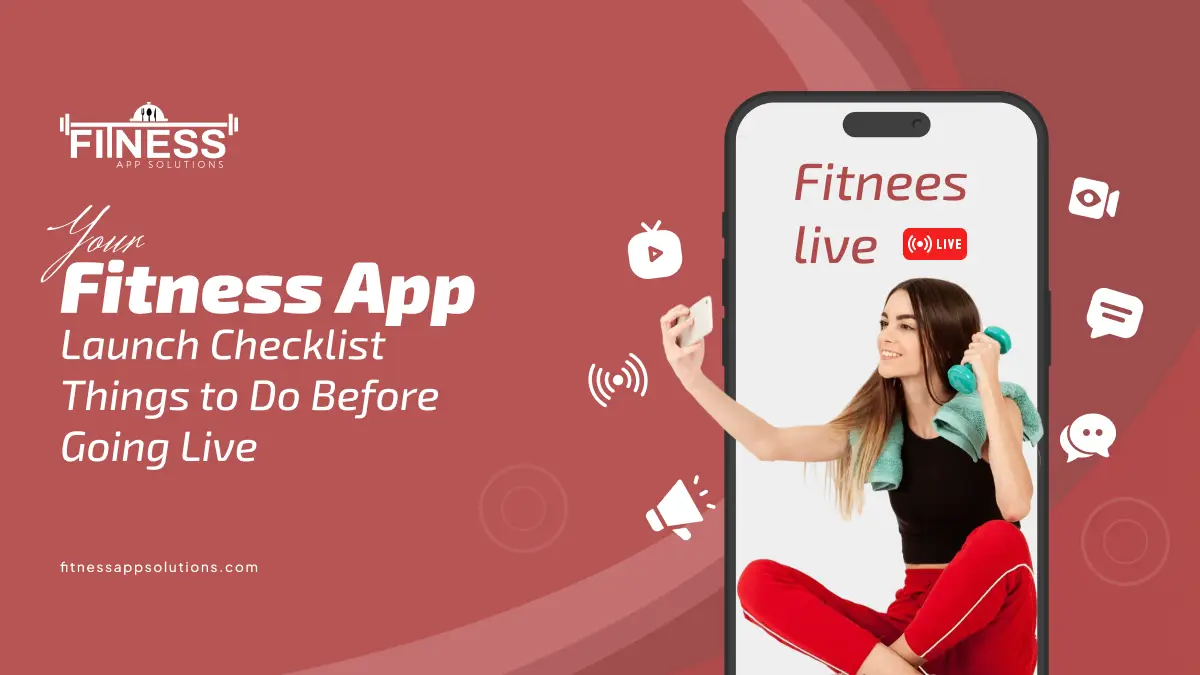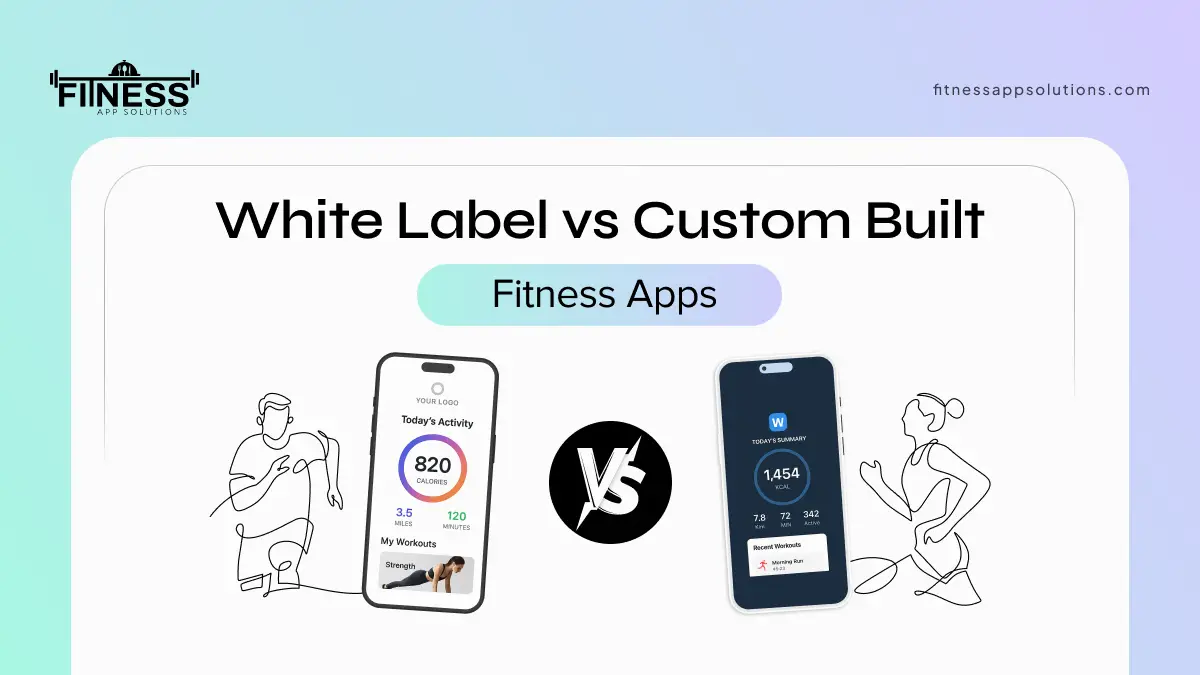The fitness app launch is a crucial part of your fitness business. It requires proper planning and execution to avoid any last-minute issues that can hurt user experience and app reputation. Having a checklist before the launch will help the fitness app developers to ensure a smooth launch of the fitness app.
In this guide, we will walk you through the essential steps to consider before fitness app launch. From testing the core features to providing the customer support can help in successful launch.
Why Preparation is Key Before Launching Your Fitness App?
Preparation is key for launching your fitness app because:
- Preparation makes sure your app works smoothly without bugs or crashes.
- It helps you understand what your users really want from a fitness app.
- Preparation allows you to learn from your competitors and find ways to stand out.
- It gives you time to create a strong marketing plan to attract users.
- Preparing your app store listing properly makes your app easier to find.
- It helps you plan notifications and updates that keep users engaged.
- Preparation reduces the chances of problems on launch day.
Overall, it gives your app a much better chance to succeed right from the start.
Things to Keep in Mind Before Launching the App

Following are the steps a fitness app developer should consider before launching the app:
Step 1: Test Your App’s Core Functionality
- Verify that all main features, such as workout tracking, progress monitoring, user profiles, and device integrations, work flawlessly.
- Test on multiple devices and operating systems to ensure compatibility.
- Check for bugs, crashes, and data syncing issues.
Step 2: Put Your App Through Real-World Testing
- Recruit beta testers from your target audience to use the app in their daily routines.
- Use analytics tools to monitor user behaviour, session length, and drop-off points.
- Iterate based on feedback to improve the app before launch.
Step 3: Understand Your Audience and Market
- Conduct surveys or interviews to learn about your users’ fitness goals, challenges, and preferences.
- Analyse competitors’ apps to identify strengths, weaknesses, and gaps in the market.
- Define your app’s unique value proposition based on this research.
Step 4: Craft a Landing Page That Builds Buzz
- Design a clean, mobile-friendly landing page that highlights your app’s key benefits and features.
- Include clear calls-to-action (CTAs) such as email sign-ups or social media follows.
- Use engaging visuals and concise copy to generate excitement.
Step 5: Plan Your Marketing Strategy Early
- Develop a content calendar for social media posts, blog articles, and email newsletters.
- Identify relevant influencers or fitness communities for partnerships.
- Prepare press releases or media kits to share with fitness bloggers and journalists.
Step 6: Optimize Your App Store Listing for Maximum Visibility
- Research and select keywords with good search volume and relevance to your app.
- Write a compelling app title and description incorporating these keywords naturally.
- Use high-quality screenshots and demo videos that showcase your app’s interface and features.
- Encourage early users to leave positive reviews and ratings.
Step 7: Prepare Your Push Notifications and Engagement Tools
- Plan a schedule for push notifications that motivate users without overwhelming them.
- Personalize messages based on user behaviour and preferences.
- Include reminders for workouts, progress milestones, and new content updates.
Step 8: Choose the Best Time to Launch
- Avoid launching during major holidays or events when your audience may be less active.
- Consider time zones of your primary user base to maximize initial engagement.
- Ensure your team is available to monitor and respond to issues immediately after launch.
Step 9: Make Sure Your App Meets All Store Guidelines
- Review the latest app store policies for both iOS and Android platforms
- Ensure your app complies with privacy regulations such as GDPR or CCPA.
- Include clear terms of service and privacy policy within the app.
Step 10: Polish Your App’s Design and Performance
- Refine the user interface for intuitive navigation and visual appeal.
- Optimize images and code to reduce loading times and battery consumption.
- Test app responsiveness and accessibility features.
Step 11: Create Engaging Video Content
- Produce short, clear demo videos that highlight how to use key features.
- Include tutorials for onboarding new users effectively.
- Share videos on your landing page, app store listing, and social media channels.
Step 12: Set Up Deep Linking and Tracking
- Implement deep links to direct users to specific app sections from marketing campaigns or notifications.
- Use tracking tools like Google Analytics or Firebase to monitor user acquisition and behaviour.
- Analyse data to optimize marketing efforts and user experience.
Step 13: Prepare Customer Support and Feedback Channels
- Set up multiple support options such as live chat, email, or in-app messaging.
- Create a comprehensive FAQ section to address common questions.
- Establish a process for collecting, analysing, and acting on user feedback.
Step 14: Link to Helpful Resources
- Provide users with access to work out plans, nutrition guides, or community forums.
- Include links to trusted external resources that complement your app’s offerings.
- Update resources regularly to keep content fresh and relevant.
Step 15: Launch Day Checklist: What to Monitor and How to Respond
- Monitor app performance metrics such as crash rates, load times, and user engagement.
- Track user reviews and social media mention to gauge sentiment.
- Have a dedicated team ready to address technical issues and user concerns promptly.
- Communicate transparently with users about any problems and upcoming fixes.
Step 16: Legal Compliance
- Have clear terms of service, privacy policy, and disclaimers ready and accessible within the app.
- Make sure the privacy policy, terms of service and data protection practises align with the regulations such as GDPR (General Data Protection Regulation), CCPA (California Consumer Privacy Act) or local privacy law.
Additional Checklist Points for Your Fitness App Launch
- Implement strong encryption for user data and secure authentication methods to protect sensitive information.Integrate tools like Google Analytics to track user behaviour, retention, and app performance.
- Establish procedures for data backup and disaster recovery to prevent data loss and minimize downtime.
- Translate app content and adapt features to suit different languages and cultural preferences if targeting multiple regions.
- Verify that in-app purchases, subscriptions, and payment gateways work smoothly and securely.
- Design an easy-to-follow onboarding flow that helps new users understand how to use the app effectively.
- Ensure your backend infrastructure can handle increasing user numbers without performance degradation.
- Outline planned feature updates, bug fixes, and improvements to keep users engaged over time.
- Make sure your app is usable by people with disabilities by following accessibility guidelines.
Final Thoughts
Launching a fitness app is just the beginning of your journey. With careful preparation and a detailed checklist, you can avoid common mistakes and create a positive first impression that encourages users to stick around. Keep listening to your users, updating your app, and refining your marketing strategies to build a thriving fitness community.
Frequently Asked Questions (FAQs)
How long should beta testing last?
Beta testing typically lasts 2-4 weeks, allowing enough time to gather meaningful feedback and address major issues.
What features should I prioritize testing?
Focus on core functionalities like workout tracking, user profiles, notifications, and any device integrations.
How can I attract users before launch?
Build a landing page, engage on social media, run email campaigns, and collaborate with influencers to generate buzz.
What are common reasons apps get rejected from app stores?
Common reasons include non-compliance with privacy policies, incomplete app information, bugs or crashes, and violation of content guidelines.
How important is app store optimization (ASO)?
ASO is critical as it improves your app’s visibility, increases organic downloads, and helps you reach your target audience effectively.
Should I offer a free trial or a freemium model at launch?
Offering a free trial or freemium version can attract more users and allow them to experience your app’s value before committing to a purchase.
How do I handle negative reviews after launch?
Respond promptly and professionally, acknowledge user concerns, offer solutions or updates, and use feedback to improve your app.



